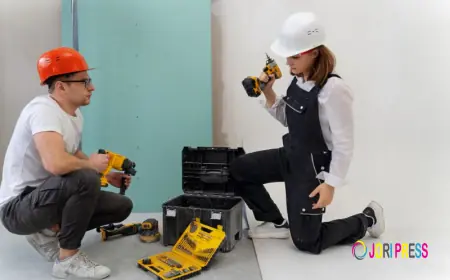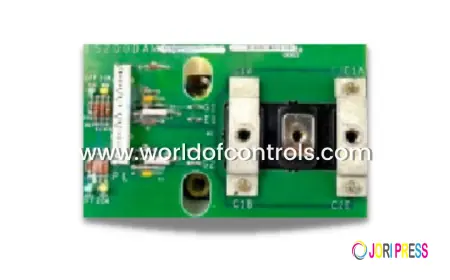Full Height Turnstiles: Reinforcing Security in the Age of Controlled Access
Full height turnstiles are redefining access control across industries. From factories to metro stations, these robust systems ensure secure, efficient, and monitored entry while integrating seamlessly with modern authentication technologies.

In an era where physical security and controlled entry are crucial for organizations, full height turnstiles have become an indispensable part of modern access control infrastructure. These robust, floor-to-ceiling barriers not only manage the movement of people but also establish an uncompromising boundary between secure and public zones.
From industrial complexes and data centers to metro stations and corporate campuses, full height turnstiles are increasingly defining how safety, automation, and accountability converge in high-security environments.
A Closer Look at Full Height Turnstiles
A full height turnstile resembles a revolving gate system, but unlike waist-high models, it spans from floor to ceiling—creating a fully enclosed access point that only permits one person at a time.
Constructed primarily from stainless steel or other corrosion-resistant materials, these turnstiles consist of several key components:
-
Rotating arms or “cages” that pivot around a central axis
-
A locking and control mechanism that responds to valid authentication signals
-
Electronic sensors and drive systems for automated or semi-automated movement
When an authorized credential—such as an RFID card, fingerprint scan, or facial recognition match—is verified, the arms unlock briefly to allow passage. Once the person passes through, the system immediately re-locks, preventing tailgating or forced entry.
Engineered for Strength and Reliability
The strength of a full height turnstile lies in its construction and mechanical precision. Designed for continuous operation, these systems are built to endure extreme usage in both indoor and outdoor settings.
The materials—usually stainless steel or galvanized iron—offer resistance to weather, corrosion, and tampering. Many modern variants are also equipped with motorized operation, providing smoother rotation and enhanced user experience while maintaining maximum security.
For facilities that operate 24/7, the dependability of full height turnstiles ensures uninterrupted entry management without compromising safety standards.
Core Advantages of Full Height Turnstiles
What sets full height turnstiles apart from other access systems is their ability to combine physical deterrence with advanced authentication.
1. Complete Access Restriction
Their floor-to-ceiling design eliminates the possibility of climbing or crawling, making unauthorized entry virtually impossible.
2. Bi-Directional Control
They can be configured for one-way or two-way operation depending on site requirements—ideal for high-traffic environments during peak hours.
3. Integration Flexibility
These turnstiles seamlessly integrate with access technologies such as RFID readers, biometric scanners, or facial recognition terminals, offering centralized monitoring and reporting.
4. Tamper Resistance
Advanced locking mechanisms and anti-reverse rotation features prevent multiple entries or forced access attempts.
5. Long-Term Economy
Built to last, they require minimal maintenance and are energy-efficient compared to manned gate systems, resulting in lower operational costs over time.
Expanding Applications Across Industries
The utility of full height turnstiles spans diverse industries where secure and monitored entry is essential.
-
Industrial Facilities: Protect restricted areas, monitor employee movement, and ensure compliance with safety norms.
-
Transportation Hubs: Metro stations and airports rely on these systems to manage passenger flow and prevent fare evasion.
-
Corporate Offices: Used to secure building entrances, parking zones, and sensitive internal areas.
-
Data Centers: Control access to server rooms and IT infrastructure with precise tracking.
-
Sports and Entertainment Venues: Manage high crowd volumes while maintaining orderly entry during events.
Their adaptability makes them a preferred solution wherever human traffic needs to be regulated without compromising on security.
Full Height vs. Half Height Turnstiles
While both turnstile types are designed for access control, their use cases differ significantly.
Full height turnstiles provide uncompromising security by creating a full physical barrier. They are ideal for outdoor or high-risk zones where intrusion prevention is critical.
Half height turnstiles, on the other hand, are more suited to indoor environments such as office lobbies or fitness centers where aesthetics and convenience take precedence over maximum security.
The choice often depends on the security level, available space, and volume of pedestrian traffic. For organizations that prioritize complete restriction, full height variants remain the gold standard.
Seamless Integration with Access Control Systems
A modern full height turnstile is rarely a standalone unit. It’s often a part of a larger network of access systems that include RFID cards, QR scanners, biometric authentication, or centralized management software.
This integration allows administrators to not only monitor and record each entry but also link the data to time attendance systems or security audits. The result is a unified approach to physical security—balancing automation, accountability, and analytics.
Installation and Maintenance: Ensuring Longevity
Proper installation is key to ensuring long-term reliability.
Experts recommend a thorough site assessment to evaluate space, pedestrian flow, and electrical requirements before deployment. A stable foundation and correct alignment are essential for smooth arm rotation and consistent performance.
For maintenance, periodic mechanical checks, lubrication, and sensor testing are advised. Cleaning the stainless-steel surfaces with non-abrasive materials helps maintain both appearance and corrosion resistance.
Well-maintained systems can operate efficiently for years, offering steady performance even in demanding environments.
Selecting the Right Turnstile System
Choosing the right full height turnstile involves evaluating multiple factors:
-
Security level required — high-risk vs low-risk areas
-
Traffic volume — single or dual-lane systems for efficiency
-
Space availability — clearance for rotation and entry comfort
-
Integration needs — compatibility with existing access infrastructure
-
Material and finish — stainless steel for durability, powder-coated variants for indoor aesthetics
A well-informed decision ensures not only physical security but also operational convenience for end users.
A Cornerstone of Modern Access Management
As organizations strengthen their perimeter defense strategies, full height turnstiles have evolved from simple entry barriers to intelligent access control solutions. Their ability to integrate with advanced verification systems makes them vital to safeguarding both people and property.
Beyond their imposing structure lies a blend of engineering precision, smart technology, and enduring reliability—qualities that make them the cornerstone of secure infrastructure in today’s connected world.
What's Your Reaction?
 Like
0
Like
0
 Dislike
0
Dislike
0
 Love
0
Love
0
 Funny
0
Funny
0
 Angry
0
Angry
0
 Sad
0
Sad
0
 Wow
0
Wow
0














































